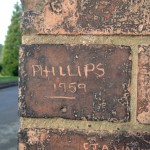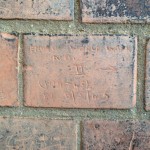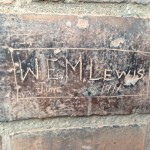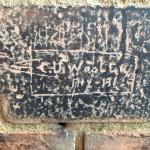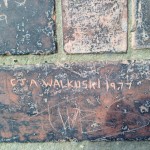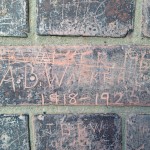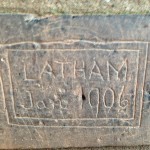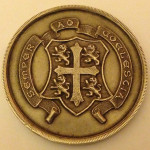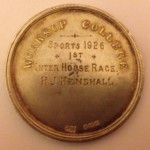By J.R. Davidson, F.C.A.
It was a cold winter’s day in January 1926 when I arrived at Worksop College and was introduced to Mr G.A. O’Meara, Housemaster of Cross (now Mason). I was shown the Cross Dormitory, which consisted of a long first-floor room with forty-two beds, twenty one on either side. At one end was a partition, beyond which was a number of wash basins. I was informed by the boys that I was fortunate, because it was the first time that hot water had been supplied to the dormitories. The long frontage looked out onto the then Masters’ tennis court at the front of the Headmaster’s House and at the rear was the wall backing onto the other dormitory. Crown (now Talbot), of similar size. On the floor above, two more dormitories. Lion and Fleur de Lys (now Mountgarret and Pelham respectively), all accounted for some one hundred and seventy boarders of the senior school. In addition, there were two Preparatory Dormitories in the North Wing accommodating some ninety-seven boys of eight years of age and over. Some of these had very young and attractive mothers. I rem ember one such boy called Alimundo; one Purple Gown used to say: ‘Ali, when is your mother coming to see you?’
The Headmaster, the Rev F. John Shirley, M .A . (Oxon) and Barrister-at-Law, was appointed the term prior to my arrival and was married in early January 1926, so at my first evening meal in the Dining Hall every boy had a piece of wedding cake on his plate. I assumed it was just a starter, so I helped myself only to find I had made a mistake.
During the first part of that term the weather was most severe, with the frozen ground being too hard for rugger, so occasionally we had long school walks in Clumber and Welbeck instead. I remember one was to the bridge at the side of Clumber Lake opposite Clumber House, which has since been demolished. The lake was frozen hard and on it was a small Elizabethan galleon. A party of boys crossed the ice and climbed aboard, waving oars and other gear. When they returned their names were taken, and they had to face the consequences.
Visiting in those days was very infrequent, but on Confirmation Day near the end of term I was confirmed by the Bishop of Derby, along with others. On that occasion my parents were present and they attended the luncheon in the Library after the service. My mother told me that she sat near the Bishop, who complained that he had a gammy leg.
As the terms passed by, substantial progress was made in sport, particularly in rugger under the guidance of H .P. Jacob, Esq., who joined the MCR. He had captained the Oxford University XV and had gained three caps for England. Whilst coaching for Worksop he was again selected for the England team.
In the field of shooting, the team returned to Worksop in 1928 from Bisley with the Spencer-Mellish Cup, the first trophy the school had won, and in addition finished 10th equal with Harrow in the Ashburton Shield. I was a member of the Shooting V III in 1929, but we were no match for our predecessors.
The Drama Society had reached a very high standard with the production of Bernard Shaw’s play Saint Joan, which received a great deal of publicity in 1929. The Headmaster played the part of the Bishop of Beauvais, and the Bishop of Southwell in his speech at the School Speech Day described it as the best school acting he had ever seen.
On July 9th 1928, I was one of a number of some hundred members of the OTC Contingent which formed a ‘Guard of Honour’ on the forecourt of Welbeck Abbey when King George V and Queen Mary paid a visit to the Duke and Duchess of Portland. When the King passed by I was surprised how small in stature he appeared to be. Afterwards we were entertained to tea in the Riding School, where the floor was covered with cork chippings and the trestle tables seemed to be unstable. The sandwiches and cakes disappeared in no time and the table manners gave no credit to the Contingent whatsoever.
Whilst all this activity was proceeding, building had started on the South Wing over the cloister from the Headmaster’s House to the Chapel. Besides giving an impressive frontage it would provide two dormitories, two bathroom s, many studies and common room s and an impressive library. The cost was to be met out of the Bond Scheme which had been launched. It was most interesting at the time when returning at the beginning of each term to find how the building was progressing. I remember during term-time when the roof was finally completed and the contractors supplied a barrel of beer for the workmen to celebrate. After enjoying themselves to the full they handed their beer mugs through the classroom windows for the boys to join in. In my case, the classroom was where the Memorial Room is today.
The Bond Scheme was Rev Shirley’s idea, and he appealed to all present and Old Boys. I remember asking my father whether I had any National Savings Certificates. When he asked why I wanted to know, I replied that Shirley wanted them . So they were cashed and I put them into a Bond at 5% interest. There was a shortfall in the cost of furnishing the Library, which had an oak floor, oak ‘linen fold’ panelling and bookcases, period tables and chairs and so forth. The Bonds taken up by the present boys more than covered the figure required.
Looking back on the four years when I was at Worksop in the 1920s, it was a most exciting and enjoyable experience of change in every respect of the School’s activities in an upward direction. It was a privilege to take part in and make some contribution to the cause. The Headmaster was a good leader, a strict disciplinarian and a man determined to make Worksop a great school. Amongst the subjects he used to teach was one for which no marks were given, and that was ‘loyalty’. This quality was reflected in those who came into contact with him during the Shirley era which enabled him to fulfil the most ambitious schemes he set out to do. At that time the country was in a deep depression with over a million unemployed. There was the General Strike of 1926, and yet Worksop was a hive of industry.

